Celebrating 10 Legendary Vehicles that Defined Their Eras
From the 1969 Ford Mustang Boss 429's raw muscle to the Volkswagen Beetle's emotional appeal, automotive history overflows with legendary vehicles that transcended transportation to become cultural icons. This comprehensive guide explores 10 unforgettable cars that left an enduring legacy, whether through groundbreaking design, record-shattering speed, or memorable movie appearances. Take a journey through automotive history, celebrating the innovation and passion behind cars like the sleek Jaguar E-Type, the unparalleled McLaren F1, and the DeLorean DMC-12's sci-fi fame.
Published August 5, 2024

Throughout automotive history, certain vehicles have risen above the rest to earn legendary status. Whether through groundbreaking innovation, record-shattering speed, or memorable big-screen appearances, these cars represent the pinnacle of design and engineering. From American muscle to European sports cars, this comprehensive guide explores 10 of the most iconic automobiles ever made. Each left an indelible mark on both the automotive world and popular culture, creating a lasting legacy that fuels the passions of collectors and enthusiasts worldwide. Take a journey through the annals of automotive history, celebrating the cars that defined their eras and continuing to quicken pulses decades later with their legendary status.
10. 1932 Ford Model B

The 1932 Ford Model B, one of Ford Motors' offerings between 1932 and 1934, stands as a prominent chapter in American automotive history, known as the "Deuce." Celebrated for its timeless design, it boasts a distinctive grille, sleek lines, and fenders that set the standard for hot rods. This full-size Ford vehicle came in diverse body styles, such as the 2-door roadster, 2-door coupe, and 4-door sedan, and featured a revamped inline-four engine. Designed by Edsel Ford, it was available at affordable prices, ranging from $460 for the roadster to $650 for the convertible sedan during its era. This iconic car, with only 842 units of the rare B 400 Bodystyle produced, is mainly for export or ambassadorial use. Replacing the Model A, it brought powerful engineering and a robust chassis, becoming an enduring symbol of innovation and design excellence in American automotive history.
9. BMC Mini
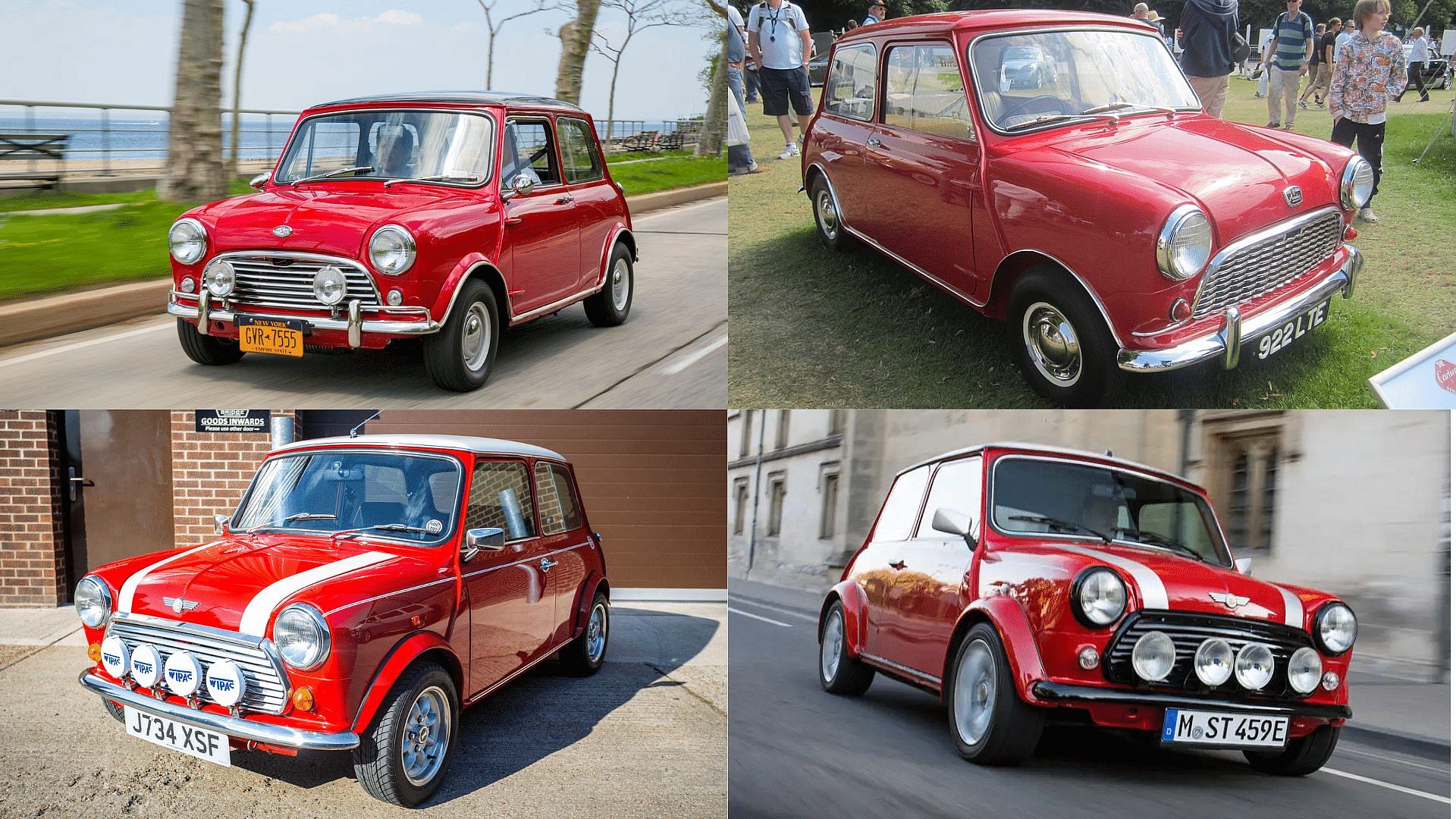
The BMC Mini, also known as the Austin Mini or Morris Mini-Minor, revolutionized the compact automotive commuter segment. This configuration allowed automakers to produce smaller, more cost-effective cars, leading to increased sales. From a driving perspective, the Mini's tight turning radius and light curb weight allowed it to compete with more powerful cars by excelling in tight corners. Its fame was further bolstered by appearances in classic films like "The Italian Job" and as the vehicle of choice for the iconic character Mr. Bean.
The BMC Mini, a compact two-door with seating for four, emerged as the ADO15 project and rolled off British Motor Corporation (BMC) production lines from 1959 until 2000. Initially marketed as Austin and Morris, it earned its own marque status in 1969. The Morris variant became universally recognized as "the Mini" or "Morris Mini-Minor." Its versatility was evident in the range of body styles, including fastbacks, estates, and convertibles. Utility versions like the Mini-Van and Mini Pick-up also found their niche. The 1980s and 1990s brought a slew of "special editions," transforming the Mini into an iconic fashion statement. The high-performance Mini Cooper debuted in 1961, although the Cooper name was later phased out in the UK by 1973. Today, the BMC Mini stands as a collectible classic, maintaining its popularity.
8. Jaguar E-Type
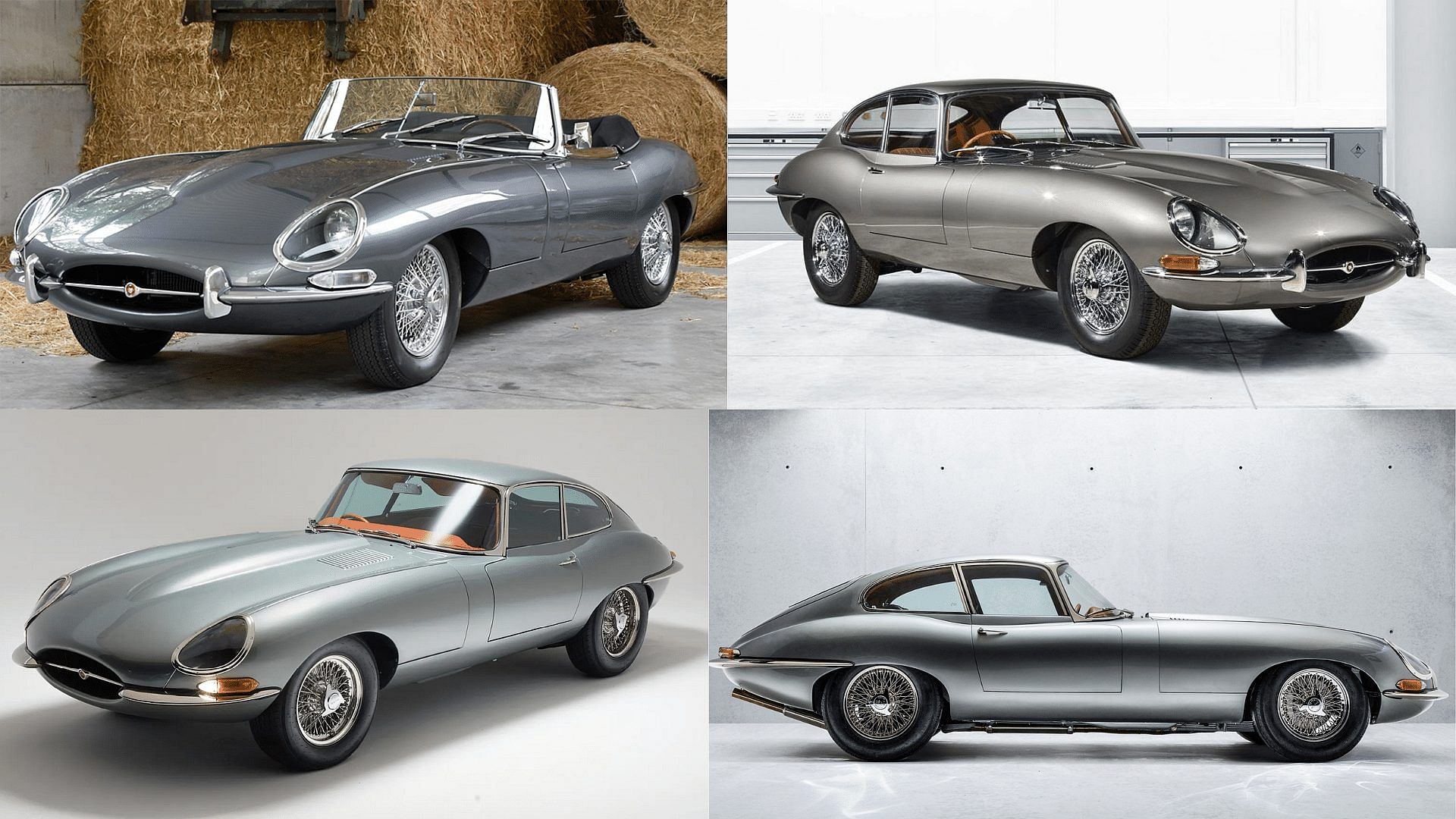
Often hailed as the most beautiful car ever made, the Jaguar E-Type's design is a masterpiece created by legendary automotive designer Malcolm Sayer. Remarkably, the 1961 E-Type had an original price tag of just $5,670, but today, it commands six-figure prices in the collector's market.
The Jaguar E-Type, also known as the Jaguar XK-E in North America, remains an enduring British sports car legend, gracing the roads from 1961 to 1974. Revered for its harmonious blend of aesthetics, robust performance, and competitive pricing, it stands as an icon in the automotive realm. Enzo Ferrari himself bestowed it the title of the "most beautiful car in the world." It boasted a 3.8-liter engine generating 265bhp, propelling it to a remarkable 150mph, a feat that made it the world's fastest production car during its era. The E-Type evolved over three series, each marked by distinct characteristics, and while it's no longer in production, aficionados can still obtain original or meticulously restored versions. With prices ranging from approximately $65,000 to $119,000 for classic models, its collectibility is a testament to its rarity, timeless design, and historical significance. Companies like Eagle excel in preserving and enhancing this automotive masterpiece, offering discerning customers a taste of automotive history.
7. Porsche 911
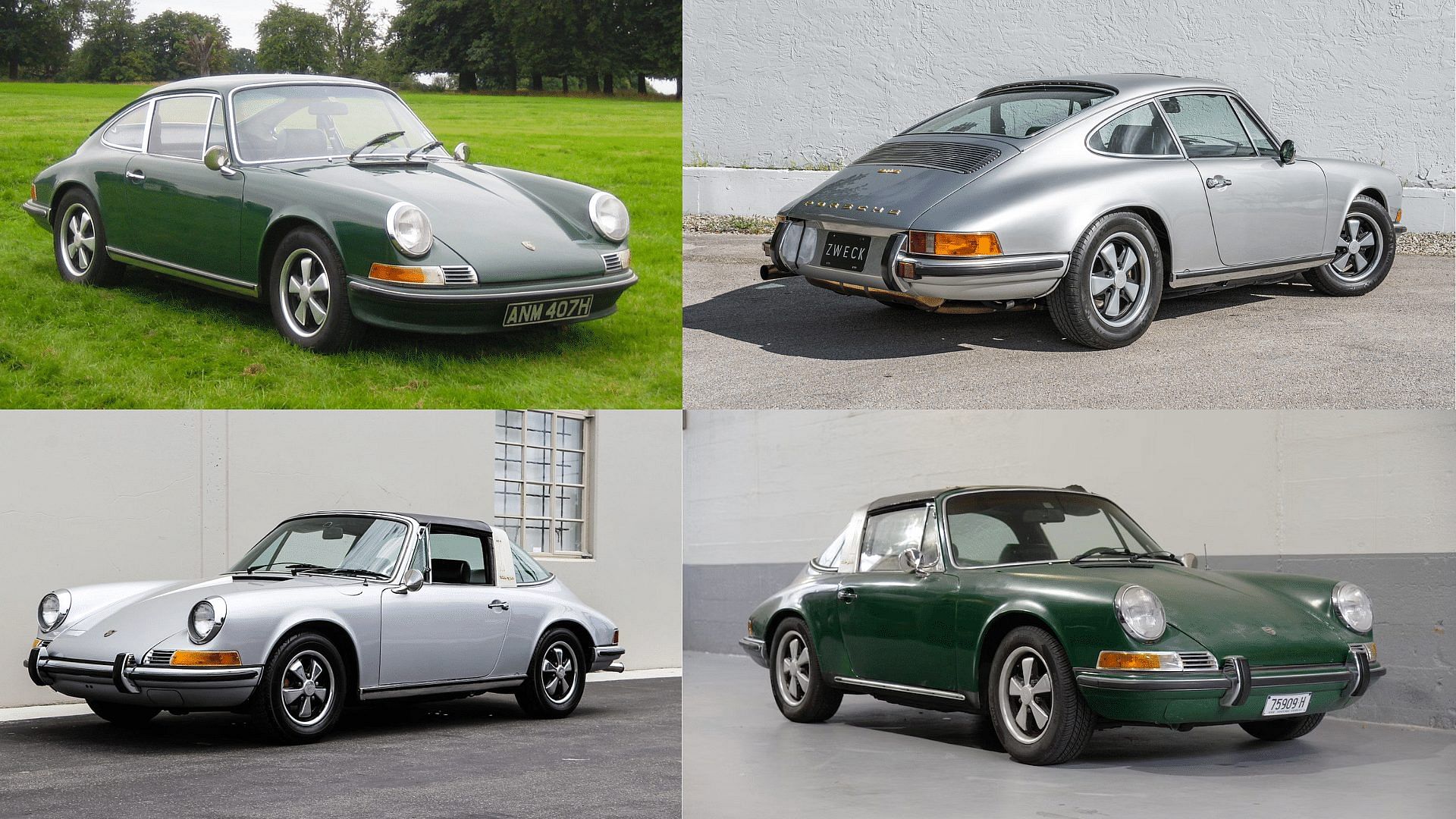
The Porsche 911 boasts one of the most recognizable silhouettes in the automotive world. Since its debut in 1964, the 911 has maintained a consistent design language, characterized by its coupe side profile, circular headlights, and perky rear end. This timeless design and engineering philosophy ensure that the Porsche 911 remains ageless.
Crafted by Porsche AG in Stuttgart, Germany, stands as a classic symbol of automotive excellence. Marking the inception of the iconic Porsche 911 lineage, this model graced the roads from September 1964 until 1989, laying the foundation for its enduring legacy. Under the hood, a robust flat six-cylinder, air-cooled engine, with 1991 cc displacement and 130 HP, propelled the vehicle to a top speed of 210 km/h. With a wheelbase spanning 87 inches and a weight of 1590 pounds, it embodied a perfect balance of power and precision. In today's market, 1964 Porsche 911s are available in varying price ranges, contingent upon factors such as condition and mileage. On average, a 1964 Porsche 911 Base commands a respectable $126,000, according to Hagerty Valuation. This pioneering model made its debut at the 1963 Frankfurt Motor Show, succeeding the Porsche 356 and achieving racing acclaim with the 1964 Types 901's fifth-place finish in the 1965 Monte Carlo Rally, now a cherished exhibit at the Porsche Museum. The 1964 Porsche 911 continues to captivate auto enthusiasts with its enduring legacy and precision engineering.
6. Ford GT40
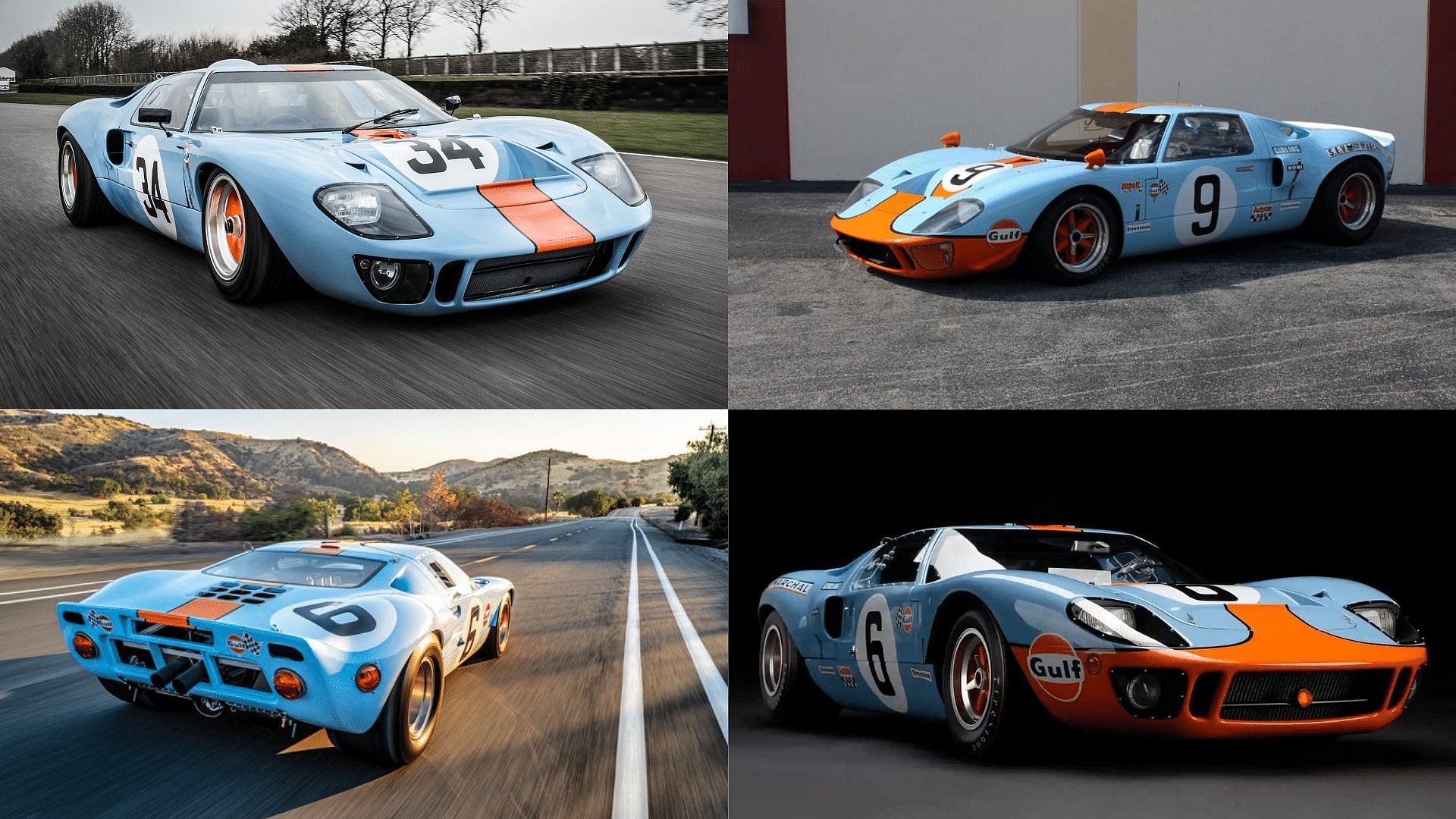
The Ford GT40's existence is a testament to both passion and rivalry. Throughout the 1960s, Ford relentlessly pursued victory at the 24 Hours of Le Mans, seeking to dethrone Ferrari. The rivalry between Ford and Ferrari extended beyond the racetrack and into ownership disputes. Ford's answer to these challenges was the creation of the Ford GT40. Developed in collaboration with Carroll Shelby, Henry Ford II, and Phil Remington, and driven by Ken Miles, the Ford GT40 finally achieved victory at the 24 Hours of Le Mans in 1966, securing the top three positions. The Ford GT40, crafted by the skilled hands of the Ford Motor Company, stands as a testament to high-performance endurance racing. Aptly named, the "40" in its title denotes its sleek height of 40 inches, adhering to racing regulations. This automotive marvel evolved through iterations like the Mk I, Mk II, Mk III, and Mk IV. The Mk II boasted a robust 7.0-liter V8 engine, a substantial upgrade from its predecessors. Ford's GT40 achieved remarkable triumph at Le Mans, securing victories from 1966 to 1969 and even clinching the Manufacturer Championship in the World Sports Car Championship in 1966. The legacy of the GT40 endures, inspiring the contemporary Ford GT, a modern homage to this legendary racing machine. Its remarkable journey has inspired books and films, including the 2019 blockbuster "Ford v Ferrari.
5. 1969 Ford Mustang Mach 1
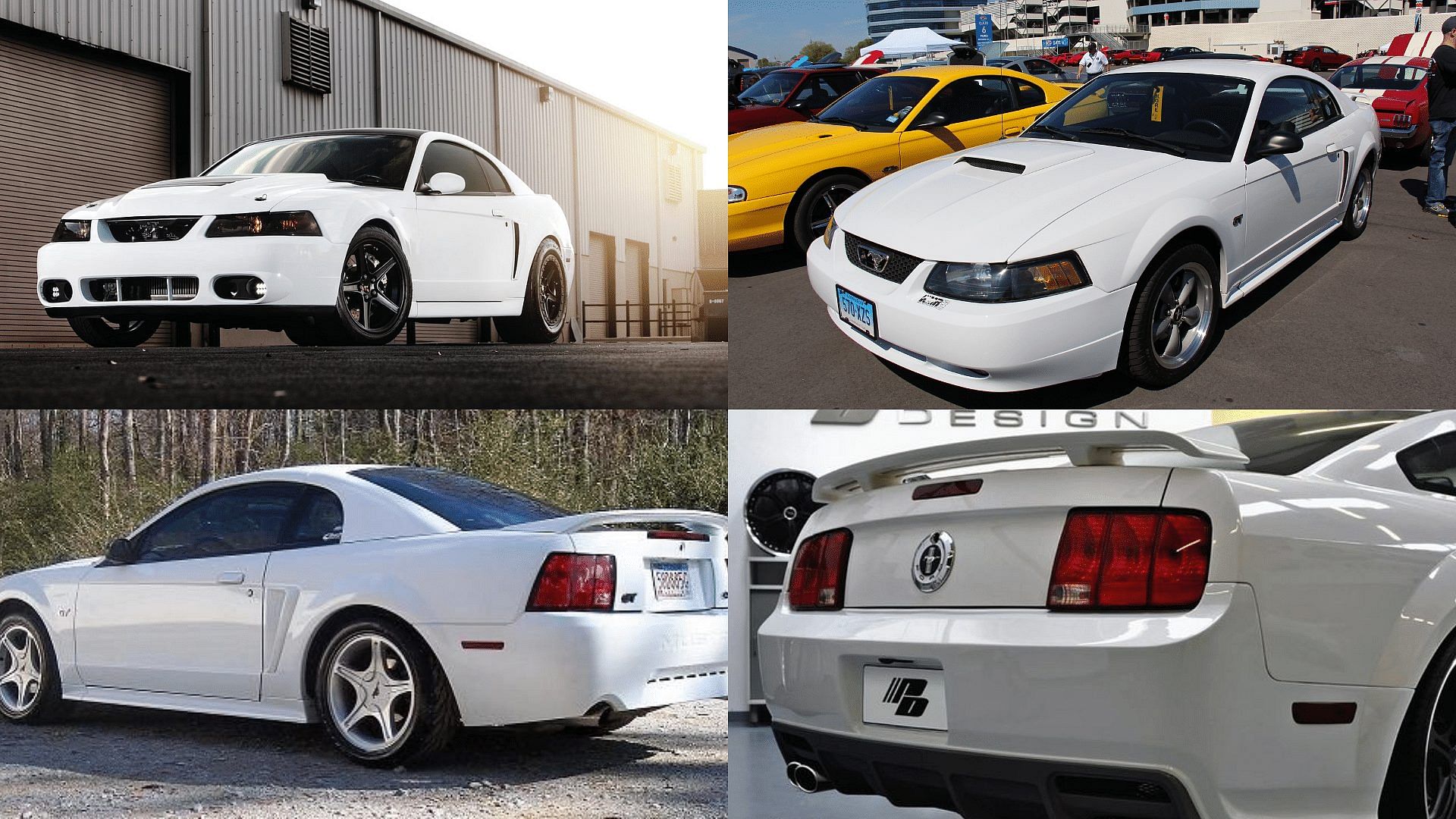
The 1969 Ford Mustang Mach 1 was a performance-oriented model of the Mustang line-up and was renowned for its aggressive exterior design. Introduced in August 1968 for the 1969 model year, it was one of six high-performance Mustang models available, including the GT, Boss 302, Boss 429, Shelby GT350, and Shelby GT500. You can also check the more recent model of these cars along with the Mustang Mach 1. It acted as a bridge between the Mustang GT and the SVT Cobra and swiftly became a legend. Equipped with a range of powertrain options, including the 428 Super Cobra jet engine, it offered exceptional performance, featuring dragster and Trans-Am sedan styling that combined performance with style. Its handling assistance, stability, and cornering capabilities were lauded. The Mach 1, known for its aggressive exterior design, played a pivotal role in sales, accounting for nearly a quarter of all Mustangs sold in 1969. Notably, the 1969 Ford Mustang Mach 1 had its share of Hollywood fame, making appearances in iconic films like Goldfinger, Thunderball, and John Wick.
4. DeLorean DMC-12
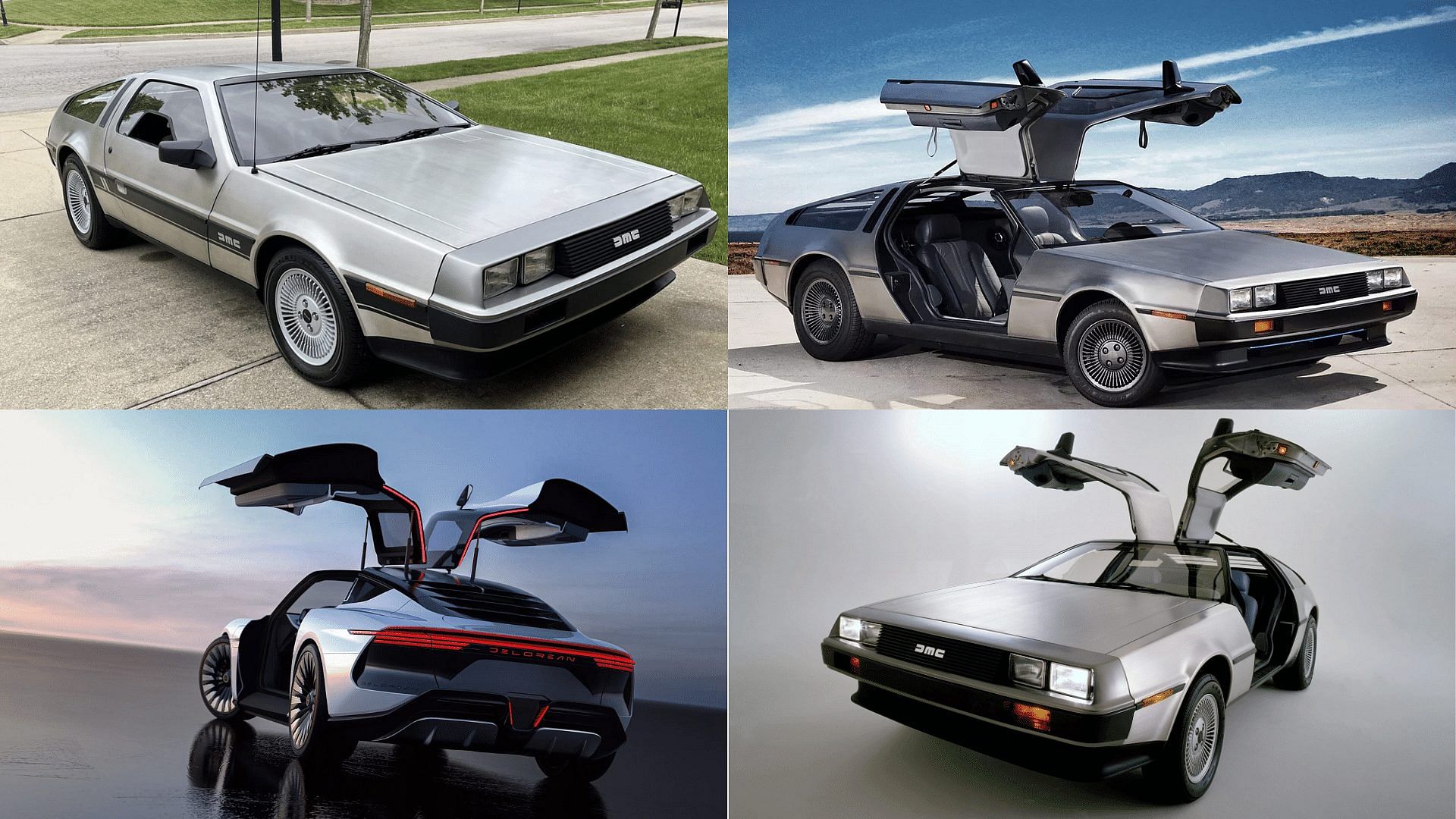
While the DeLorean DMC-12 may be one of the most famous iconic movie cars of all time, it remains both overrated and iconic. Powered by a modest engine shared with Peugeot, Renault, and Volvo. Despite these relatively modest performance figures, the DMC-12's association with time travel in the "Back to the Future" franchise has cemented its status as an enduring icon.
The DeLorean DMC-12, a rear-engine two-passenger sports car, was produced by John DeLorean's DeLorean Motor Company (DMC) from 1981 to 1983. Under the hood, it featured a Peugeot-Renault-Volvo (PRV) 2.85 L (174 cu in) SOHC V6 engine generating 130 horsepower and 153 lb-ft of torque, resulting in a respectable but not exceptional 0-60 mph acceleration time of around 10.5 seconds. The DMC-12 was famous for its iconic gull-wing doors and stainless-steel body panels mounted on a fiberglass underbody with painted front and rear bumpers. During its single year of production, approximately 9,000 units were built, plagued by quality control issues due to an inexperienced workforce. While it gained fame from the Back to the Future film trilogy (1985-1990), the DMC-12 had already ceased production. Today, it enjoys a cult following among enthusiasts, with used prices ranging from $44,500 to $54,500.
3. McLaren F1
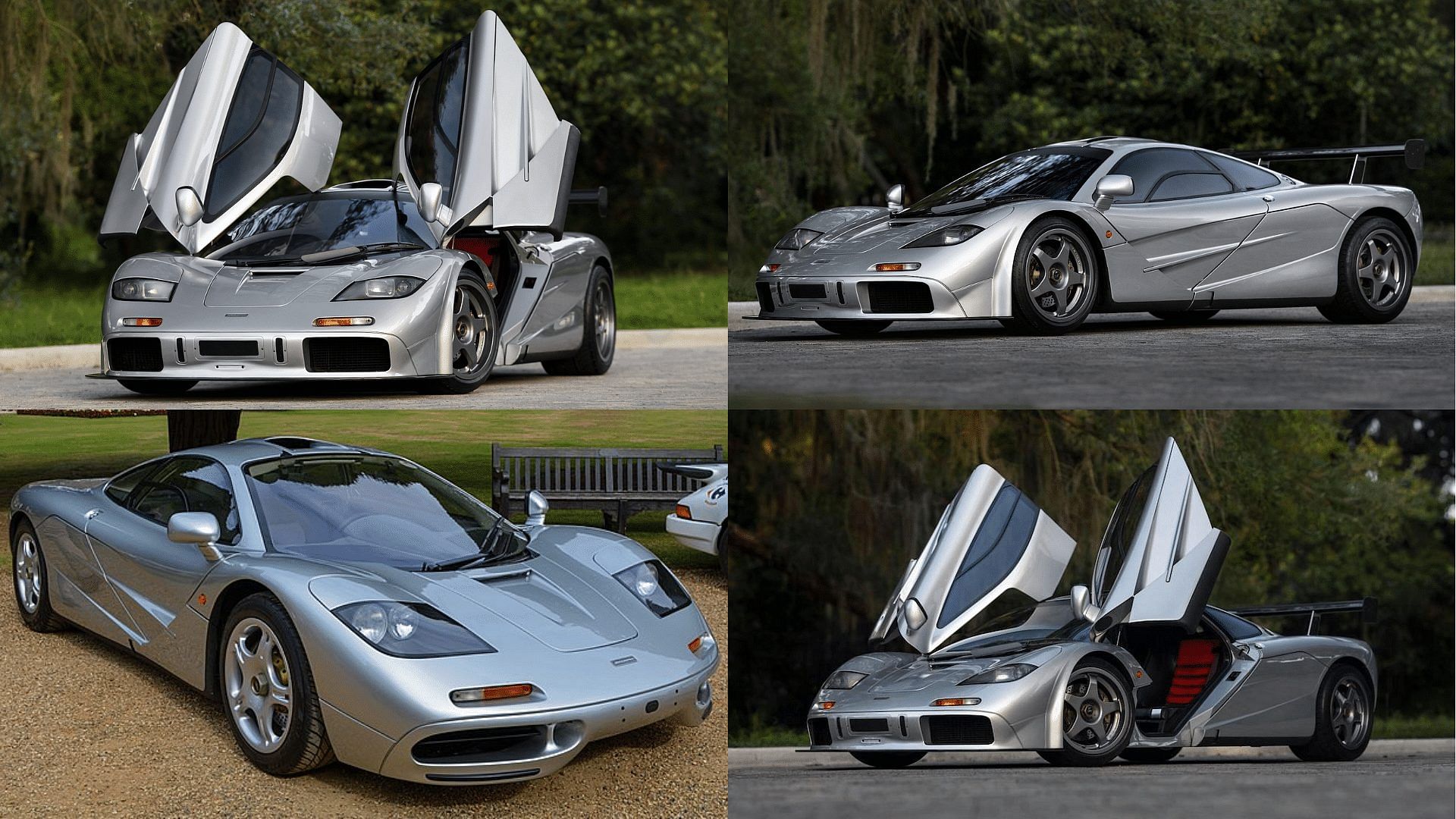
The McLaren F1, a celebrated sports car hailing from the UK's McLaren Cars, rolled off the assembly lines between 1992 and 1998, culminating in a mere 106 units. Underneath its sleek exterior lies a BMW S70/2 6.1-liter V12 engine generating 618 horsepower and 455 lb-ft of torque. Remarkably, it catapults from 0 to 60 mph in 3.2 seconds and boasts a top speed of 241 mph, this groundbreaking hypercar was designed to be the best in the world. This speed record stood for over a decade until it was surpassed by the Bugatti Veyron. Nevertheless, the McLaren F1 remains the fastest naturally aspirated car in history, symbolizing the pinnacle of automotive engineering and design. The car's dimensions measure at 168.82 inches in length, 71.65 inches in width, and 44.88 inches in height, with a 107.01-inch wheelbase. Tipping the scales at 2,509 lbs, it's a lightweight marvel. The F1's unique 2-door coupe body style accommodates three seats, with the driver's throne at the center and two passenger seats slightly to the rear. Power is transmitted through a 6-speed manual gearbox to the rear wheels. In terms of production, 64 road-ready F1s emerged alongside 5 F1 LMs, 3 F1 GTs, and 28 F1 GTRs destined for the racetrack.
2. Toyota Mk4 Supra
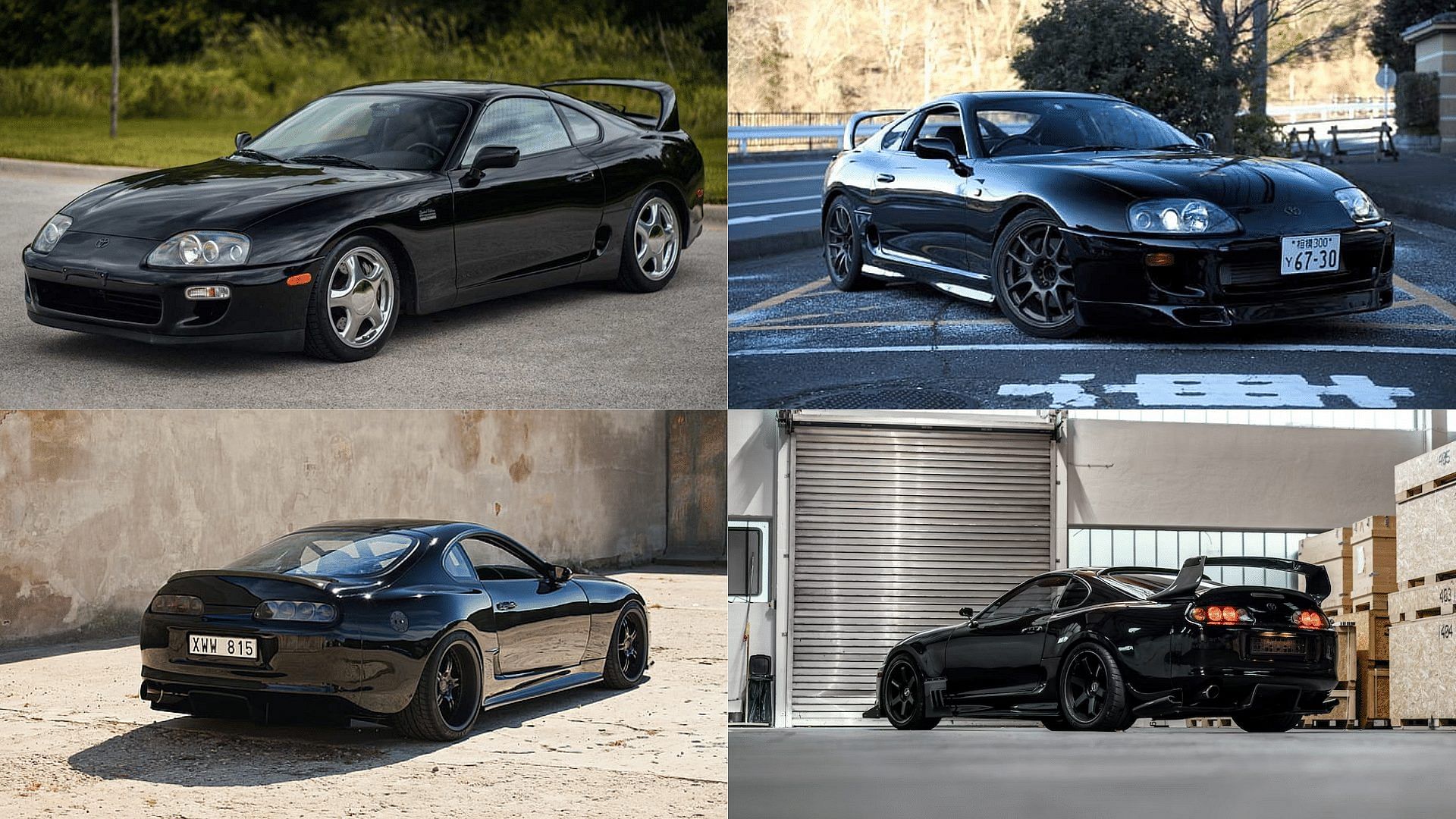
The Toyota Mk4 Supra, also known as the A80 Supra, represents the fourth generation of the renowned Toyota Supra sports car and grand tourer, produced from 1993 to 2002. Coveted by automotive enthusiasts, the Mk4 Supra stands out as one of the most iconic cars of all time for its sleek design, robust performance, and advanced features. Under its hood, you had a choice of two engines: a 3.0L inline-6 naturally aspirated (2JZ-GE) or the coveted 3.0L inline-6 twin-turbocharged (2JZ-GTE) powerplant, boasting 320 horsepower and 315 lb-ft of torque. Transmission options included a 6-speed manual and a 4-speed automatic, with the manual favored for its engaging driving feel. Impressively, the twin-turbo version hits 0 to 60 mph in about 4.6 seconds, capped at 155 mph. Thanks to its well-balanced chassis and 4-wheel independent suspension, the Mk4 Supra excels in handling and stability. As for safety, the NHTSA refrains from assigning an overall rating. In today's market, the Mk4 Supra remains highly sought after, with prices ranging from $51,000 to $215,800 as of September 2023.
The Toyota Mk4 Supra gained widespread fame, thanks in large part to its prominent role in the Fast and Furious saga. However, what truly sets the Mk4 Supra apart is its incredible aftermarket potential, making it one of the most iconic cars in the world. Beyond cosmetic upgrades, the 2JZ-GTE engine can be modified to handle up to 1,500 horsepower with the right modifications. This remarkable engine durability has made the Toyota Supra one of the few cars capable of lasting for 500,000 miles with proper care.
1. Bugatti Veyron
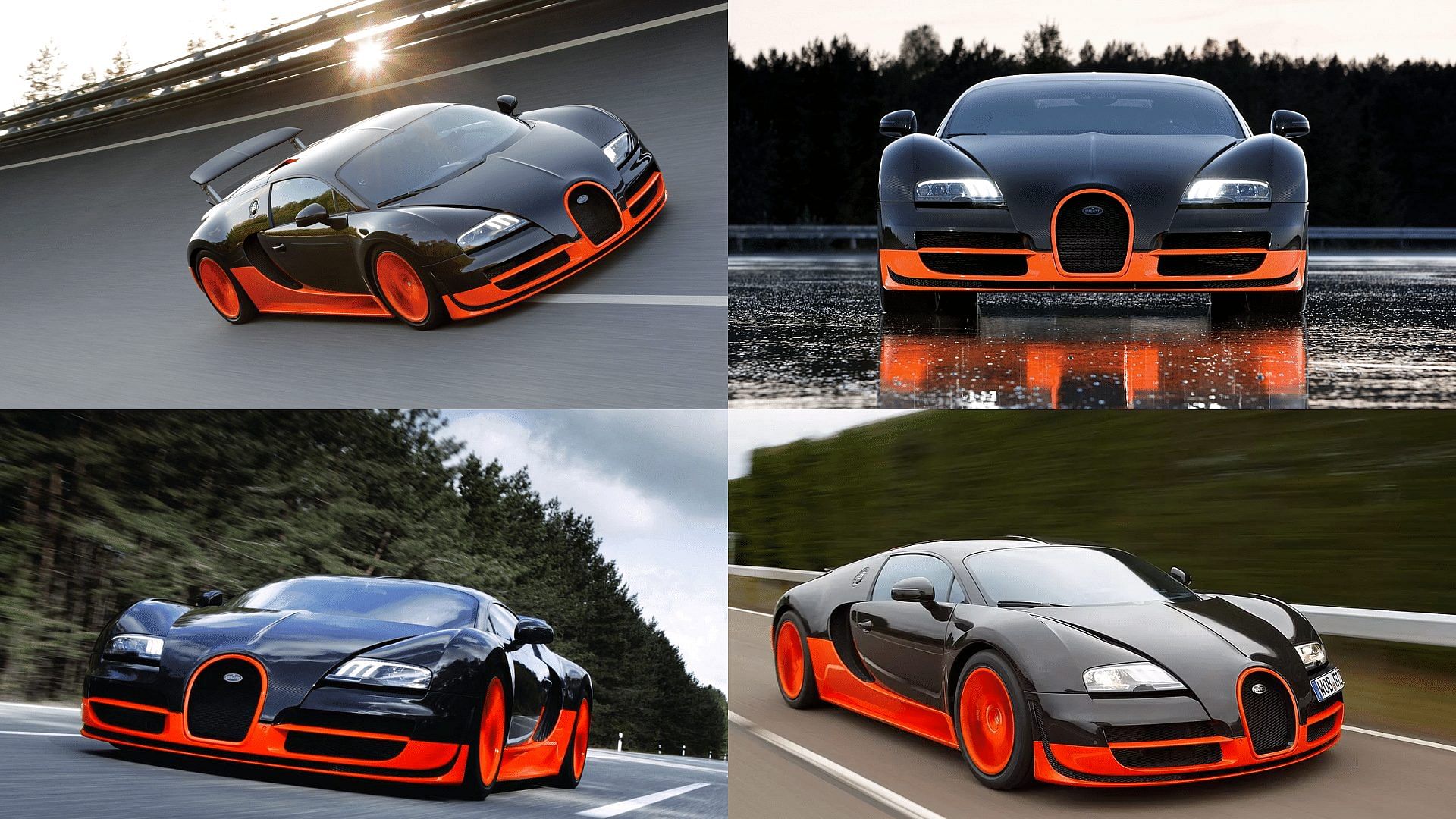
In 2005, Bugatti unveiled the Veyron, a supercar that became one of the most iconic cars of all time and the talk of the automotive world. Upon its release, the Veyron set a new top speed record for production cars. Two years later, SSC built the Ultimate Aero, which narrowly surpassed the Veyron's top speed record by a margin of less than 3 mph. In response, Bugatti created the Veyron SuperSport, packing a 1,200-horsepower W16 engine and reaching a top speed of 267 mph. The Veyron's record-breaking achievements left an indelible mark, and it still lingers in the collective memory as one of the fastest cars in the world.
The Bugatti Veyron EB 16.4, a mid-engine sports car crafted in Germany under the guidance of the Volkswagen Group and Bugatti, finds its home in the French town of Molsheim. Named in honor of racing legend Pierre Veyron, this iconic supercar made its debut in 2005, marking an era. Its original iteration boasted a remarkable top speed and earned the prestigious title of "2000s Car of the Decade" from BBC's Top Gear. Powering this automotive marvel is an 8.0-liter turbo-quad W-16 engine with a formidable 1001 horsepower and 922 pound-feet of torque. Accelerating from 0 to 60 mph in just 2.5 seconds, the Veyron reaches an impressive top speed of 254 mph. Its distinctive, aerodynamic design incorporates a mid-engine layout and all-wheel drive, enhancing both form and function. With plans to produce a limited run of 300, the Veyron legacy endures, celebrated for its exceptional performance and opulent features.
In conclusion, these 10 iconic cars have left an indelible mark on the automotive world. Their enduring appeal, whether through performance, design, or cultural significance, ensures that they will remain icons for generations to come. As automotive enthusiasts, we can only marvel at the lasting legacy these cars have created, reminding us of the timeless beauty and innovation that define the world of automobiles.
Write a comment
Comments
No Comments Yet








